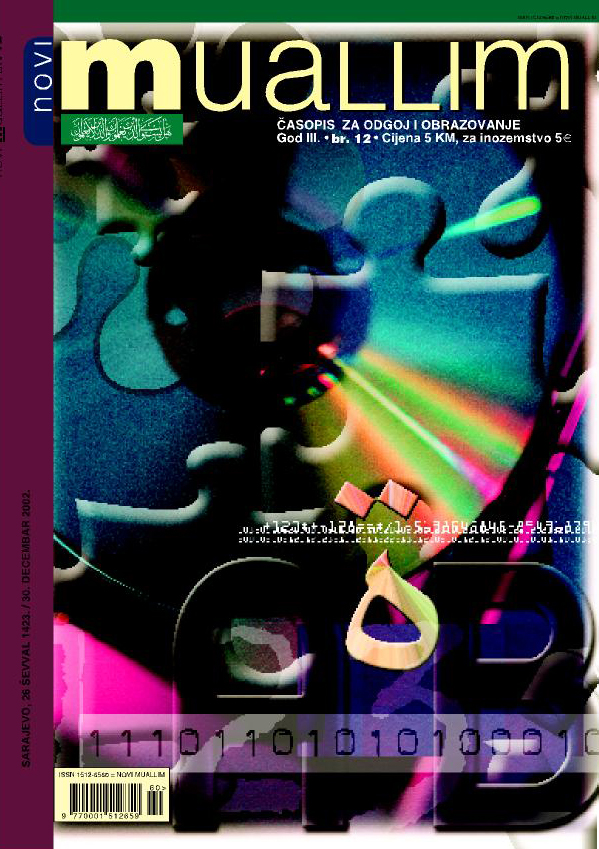SOME EXAMPLES OF THE PROPHET'S (S.A.w.s.) NON-VERBAL COMMUNICATION
DOI:
https://doi.org/10.26340/muallim.v3i12.1481Abstract
Although a human communication is primarily based on the verbal expression, this work highlights the significance of the non-verbal communication as the essential part of the commununication process, particularly one used for commununicating emotions. lt is very important to utize both types of communication in the educational process since each has it particularities that allow for the achievement of the most efficient results. According to Pavle Braj_a. the non-verbal communication consists of the following: body language, facial expression, eye contact, speech, gestures, touch, clothing... Prof. Mujo Slatina stresses that the coordination of the verbal and non-verbal messages holds the secret to the successful communication. The last Prophet, Mohammed s.a.w.s, as the educator of the Umma and the mankind as a wbole, has (by Allah's wisdom and inspiration) certamly made use of all types of communication in calling people to believe in One and Only Allah, s.w.t in order to achieve the best results in da'wa. A considerable number of Hadith found in the work called "Musalsalat" also illustrates examples of non-verbal communication used by the Prophet s.a.w.s. In order to emphasize certain parts of the speech, the Prophet s.a.w.s., would change his position, raise his voice, repeat words a number of times or would use gestures. He would also laugh or would lift his glance for a moment when he would wish to express his emotions. That way he used, ina given momentand in the particular case, the type of human communication, which resulted in greatest understanding.
Downloads
Published
How to Cite
Issue
Section
License
Naknada:
a. Časopis ne naplaćuje naknadu za obradu članaka (APC) i naknadu za podnošenje članaka.
Autori koji objavljuju u ovom časopisu pristaju na sljedeće uvijete:
- Autori zadržavaju autorska prava i pružaju časopisu pravo prvog objavljivanja, pri čemu će rad jednu godinu po objavljivanju biti podložan licenci Creative Commons imenovanje koja omogućuje drugima da dijele rad uz uvijet navođenja autorstva i izvornog objavljivanja u ovom časopisu.
- Autori mogu izraditi zasebne, ugovorne aranžmane za ne-ekskluzivnu distribuciju rada objavljenog u časopisu (npr. postavljanje u institucionalni repozitorij ili objavljivanje u knjizi), uz navođenje da je rad izvorno objavljen u ovom časopisu.


